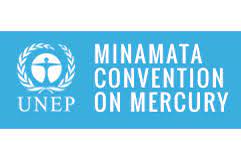Mercury Was Found In The Water Bodies Fed By The Greenland Ice Sheet.:

According to recent research, high concentrations of mercury were found in the water bodies fed by the Greenland Ice Sheet.
- Typical dissolved mercury content in rivers is about 1 – 10 ng L-1 .
- In the water bodies fed by the Greenland Ice Sheet, scientists found dissolved mercury levels in excess of 150 ng L-1, far higher than an average river.
- It is not the industries or other anthropogenic activities, as is the case with most contaminants.
- Mercury-rich bedrock is weathered during the slow movement of glaciers down the slope of hills and the ground particles are carried into the streams as the glacier melts.
- Mercury is a naturally occurring element that is found in air, water, and soil. Released into the atmosphere through natural processes such as weathering of rocks, volcanic eruptions, geothermal activities, forest fires, etc.
- Mercury is also released through human activities.
- Mercury may have toxic effects on the nervous, digestive, and immune systems, and on lungs, kidneys, skin, and eyes.
- Chemicals of major public health concern- Mercury is considered by the World Health Organisation (WHO) as one of the top ten chemicals or groups of chemicals of major public health concern.
- Minamata Disease: A disorder caused by methylmercury poisoning that was first described in the inhabitants of Minamata Bay, Japan, and resulted from their eating fish contaminated with mercury industrial waste.
Minamata Convention:
- The Minamata Convention on Mercury is a global treaty to protect human health and the environment from the adverse effects of mercury and its compounds.
- It was agreed at the fifth session of the Intergovernmental Negotiating Committee in Geneva, Switzerland 2013. It entered into force in 2017.
- Controlling the anthropogenic releases of mercury throughout its lifecycle is one of the key obligations under the Convention.
- It is a UN treaty.
- The Convention also addresses interim storage of mercury and its disposal once it becomes waste, sites contaminated by mercury as well as health issues.
- India has ratified the Convention.




